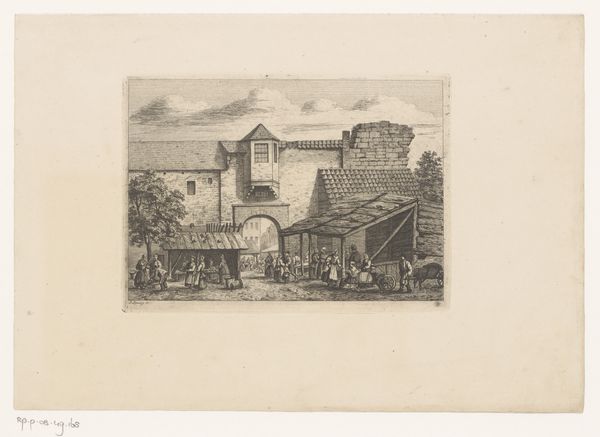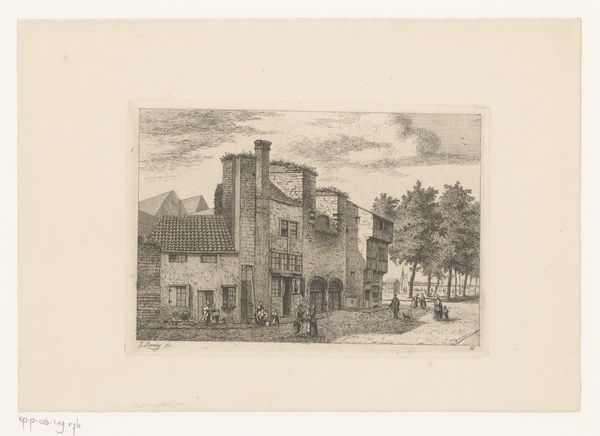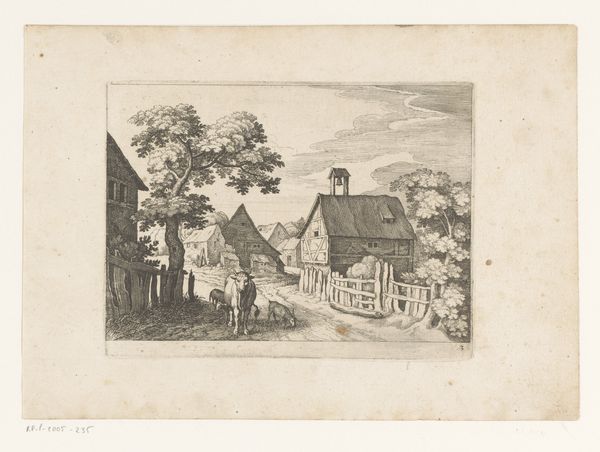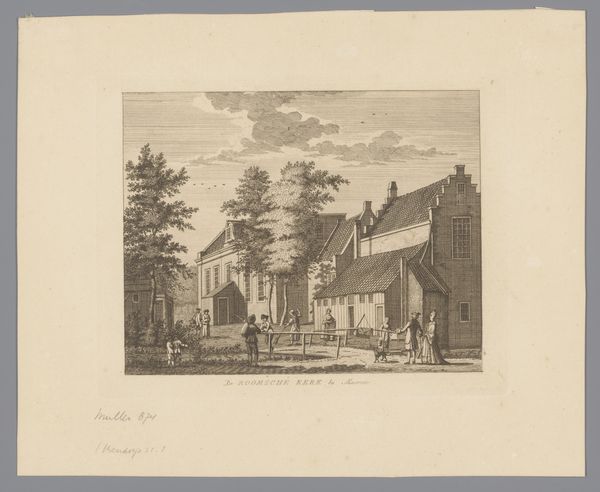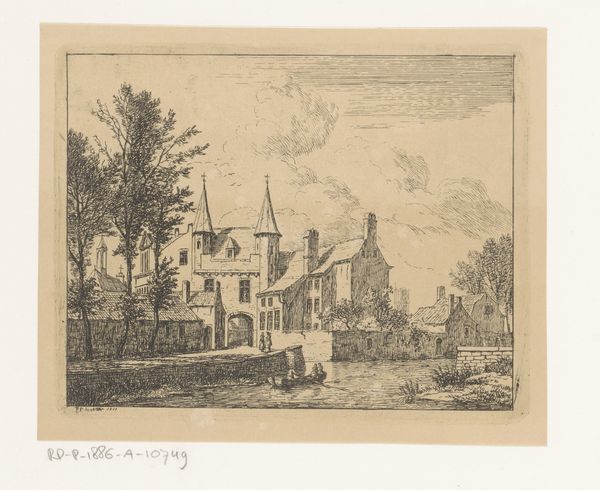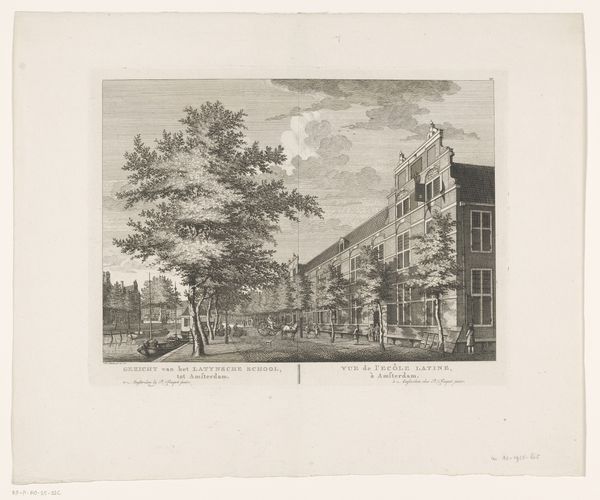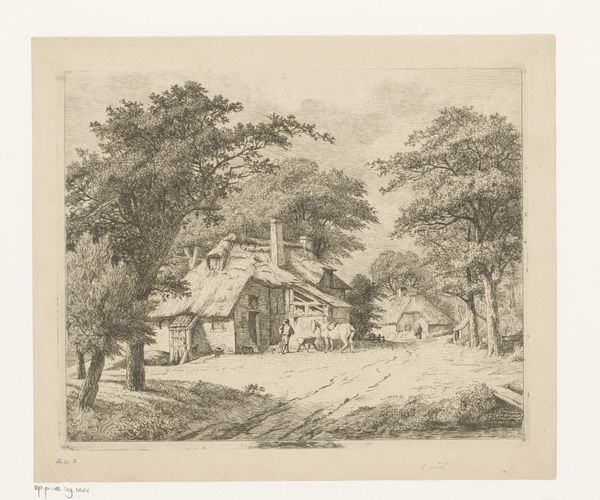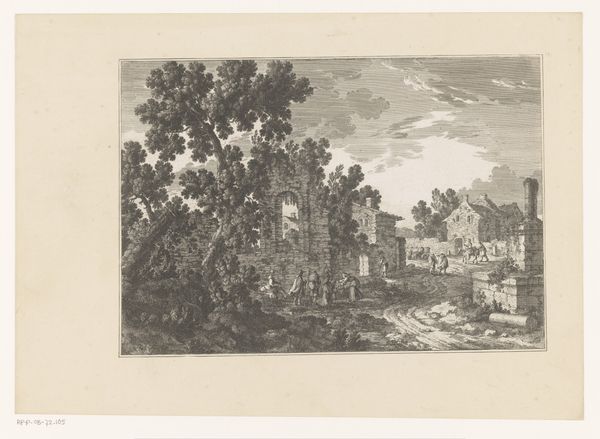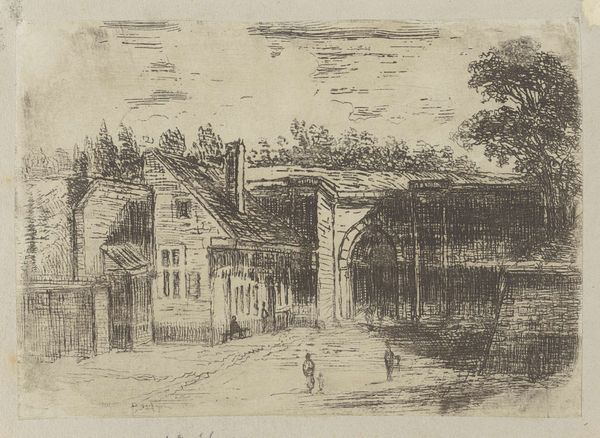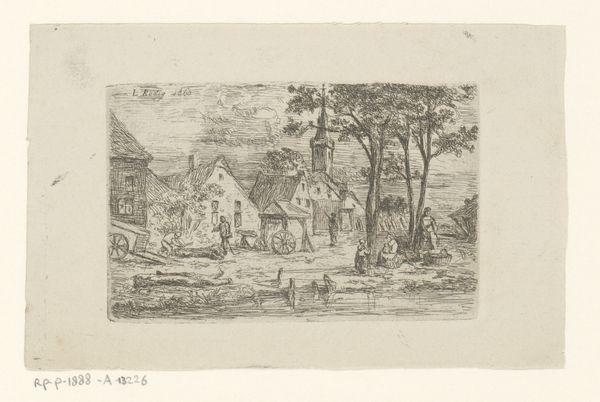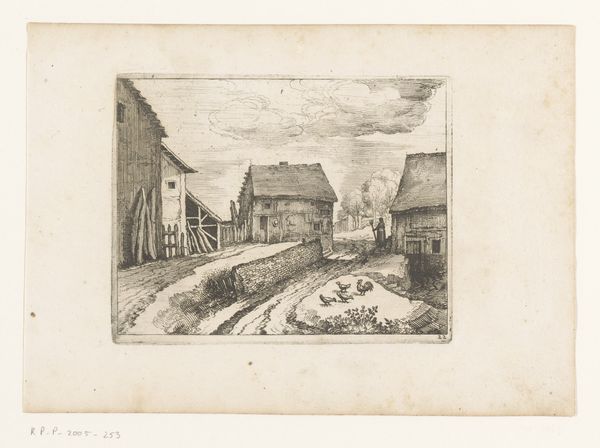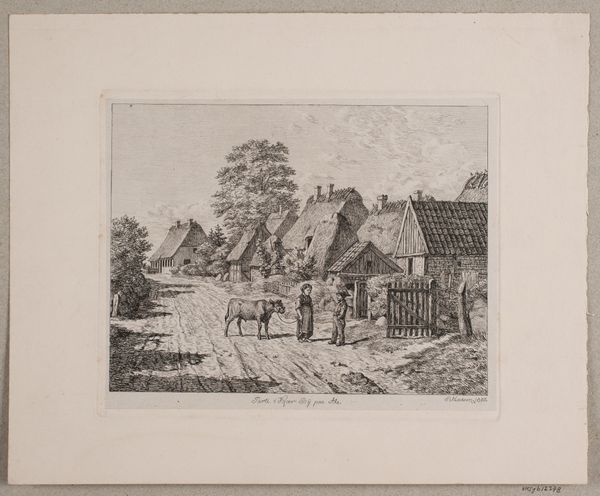
print, etching, engraving
# print
#
etching
#
cityscape
#
genre-painting
#
engraving
#
realism
Dimensions: height 151 mm, width 193 mm
Copyright: Rijks Museum: Open Domain
Editor: We are looking at “View of the Old Fish Market in Antwerp,” an 1868 etching by Jean Théodore Joseph Linnig. There’s such a strong sense of everyday life bustling here, a kind of groundedness, but I wonder what I'm missing. How do you interpret this work? Curator: It's fascinating how Linnig captures this specific place and time in Antwerp, isn't it? Beyond the immediate depiction of daily life, consider the role images like these played in constructing and preserving a certain vision of the city. Think about who might have been commissioning or purchasing such prints. Were they locals documenting their home, or were these aimed at tourists or those with a sense of nostalgia? The deliberate choice to depict this market – what does it tell us about the values the artist wanted to portray, and potentially the intended audience’s? Editor: That's a really interesting point about the audience. It does feel like there’s an element of idealizing daily life – is that a common thing in prints of this era? Curator: Absolutely. We need to also question who gets included in this vision. The market seems full of life, but are there shadows, marginalized figures or perhaps romanticizing tendencies at play that reinforce existing social hierarchies or economic divisions? How is it influencing how Antwerp saw itself then, and perhaps how we see it today? Editor: So, by appreciating that we are considering not just the scene depicted but also the role the print played in shaping social memory? It is like, not just the Fish Market, but the *idea* of the Fish Market. Curator: Precisely. Understanding the print’s historical and cultural context encourages us to think critically about representation, urban development, and the social functions of art. Now, how would *you* present this information to museum visitors, encouraging them to reflect on these social functions? Editor: Well, this has definitely given me a lot to consider, especially the role of the art itself in documenting and sometimes cementing perceptions of places. Thanks so much for shedding light on this, I feel like I am seeing so much more clearly. Curator: And I've enjoyed how your questions made me rethink the influence and reception of this type of work. Thank you.
Comments
No comments
Be the first to comment and join the conversation on the ultimate creative platform.
